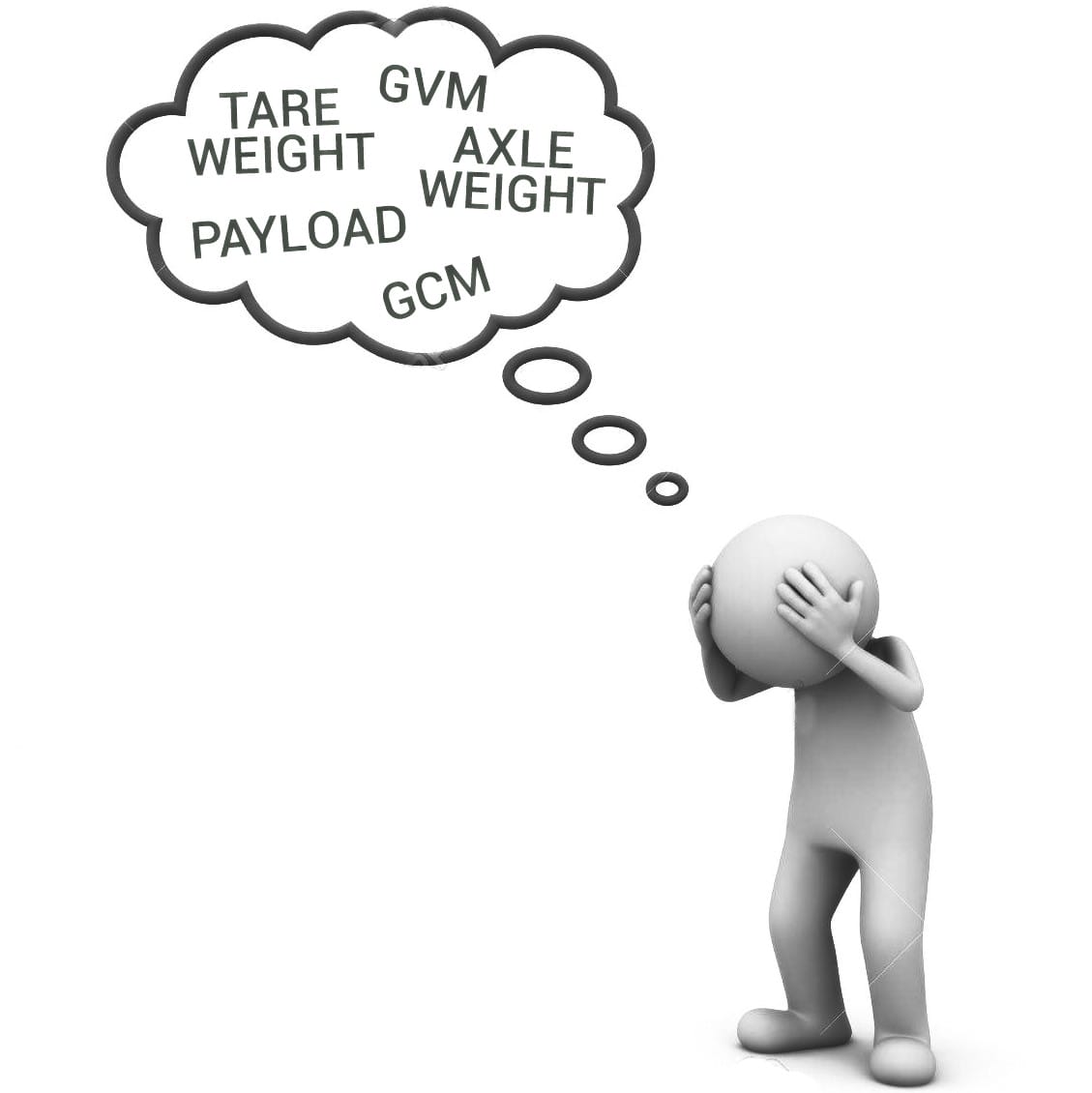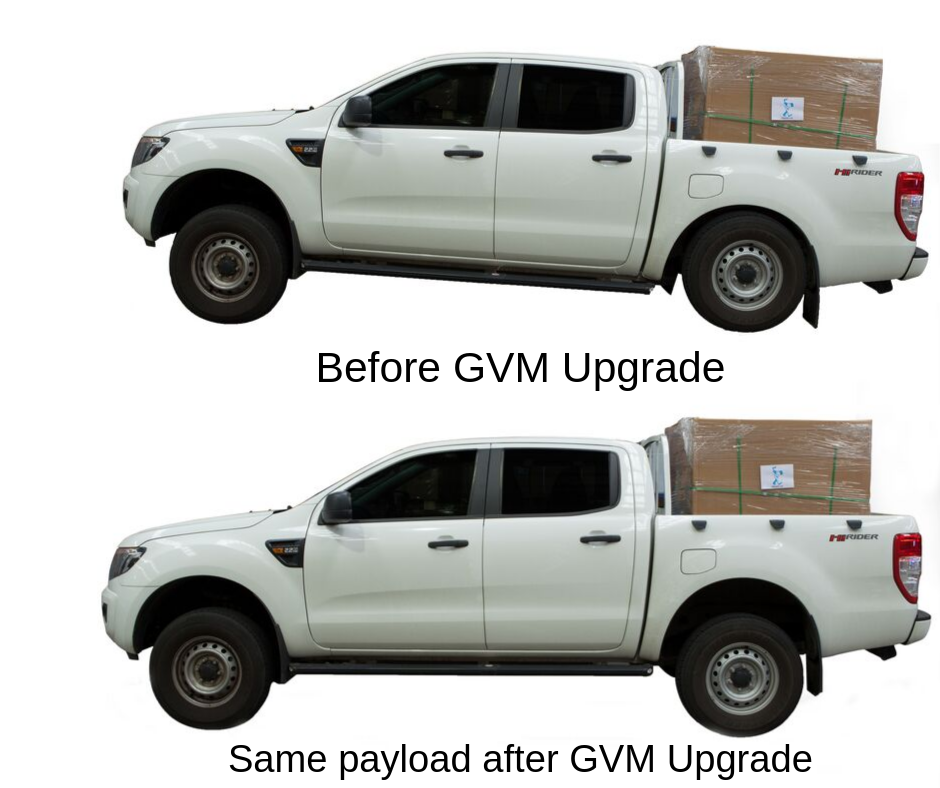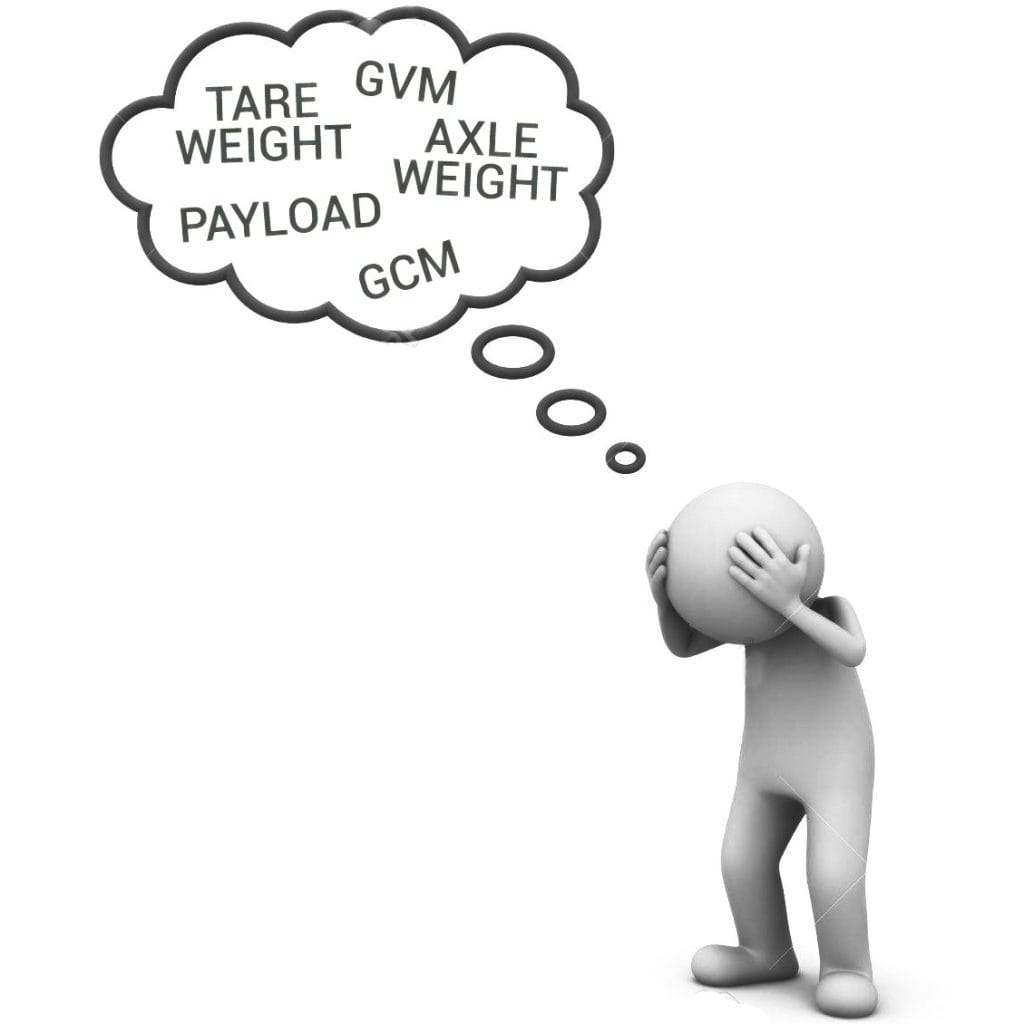All this technical jargon, what does it all mean? And why should it be important to me – it only relates to heavy vehicles doesn’t it?
 We’re here to unravel the mysteries of these vital statistics of the fleet trade; and explain why they’re important, even down to the lightest of your fleet of service vehicles – utes and vans.
We’re here to unravel the mysteries of these vital statistics of the fleet trade; and explain why they’re important, even down to the lightest of your fleet of service vehicles – utes and vans.
GVM – Gross Vehicle Mass is the maximum the weight of the vehicle can be at any time. This includes the weight of the vehicle itself, any service body and/or accessories attached, occupants and vehicle fluids. This figure is set by the manufacturer.
Kerb Weight – The kerb weight (also referred to as kerb mass) is the weight of the vehicle from factory without any passengers, cargo, or additional fitout items. i.e if the vehicle was purchased as a cab/chassis, the kerb weight is the weight of the vehicle as cab/chassis only, without any occupants or fuel.
Tare Weight – Tare weight indicates the weight of the vehicle after any additional accessories have been added, but before any cargo has been added. Also can be called unladen weight.
Payload – payload is the carrying capacity of the vehicle after the vehicle weight, and any additional accessories have been accounted for. Payload indicates the weight of the cargo and tools the vehicle can carry.
GCM – Gross Combined Mass is the maximum combined weight of vehicle, trailer, and any cargo that the vehicle and/or trailer is carrying. This is the maximum mass that the combination of vehicle & trailer can be at any given time.
GVM Upgrades 
So, if the GVM is the maximum weight that the manufacturer allows the vehicle to carry, how can I legally fit a GVM upgrade?
Camco is an approved installer for Pedders GVM+ upgrade kits. These kits are compliant with ADR (Australian Design Rules) and NZTA requirements, and upgrade the vehicle suspension to support it carrying more weight. The kits increase the legal GVM that the vehicle can carry, but do not have an impact on the GCM of the vehicle, which is the manufacturer’s maximum combined weight of the vehicle and trailer.
Effectively, the Pedders GVM+ kits take part of the allowable trailer weight, and add that to the vehicle weight limit, thereby limiting any overstrain on the drivetrain of the vehicle.
Axle Weights
Why all this talk of axle weights? If I have a GVM+ upgrade kit on my vehicle, I should be able to load it up, right?
Even with a GVM upgrade, it’s important to stay within the prescribed axle weights – overloading either of the vehicle axles will affect the stability of the vehicle and make it unsafe for your drivers. It’s often easier to overload the rear axle as most of the cargo load is on the rear axle, and weighty trailers will often tip the rear axle over its limit. When towing a trailer, remember that 10% of the trailer weight acts as downforce on the rear axle.
Tips to limit rear axle overload
Remember that each additional kilogram of weight added to the rear axle of the vehicle isn’t a kg-for-kg downforce on the rear axle capacity. The driveshaft of the vehicle acts like a lever, with the rear axle as the fulcrum, meaning each kg of cargo on the rear axle decreases the load on the front axle, which in turn, magnifies the load on the rear axle. Adding a trailer further complicates this issue.
Vehicles with a shorter cab allow for more of the vehicle load to be transferred to the front axle, which limits the strain on the rear axle. Can you move to a single or extra cab vehicle rather than a double cab?
Rethink – how often do you need to tow a trailer to site? If it’s not very regularly, do you really need a towbar on the vehicle? We’ve found that removing the towbar from the fitout helps in keeping the rear axle weight down.
Take a look at your fitout. Is there anything in there that you don’t need? Could you shift heavier items further forward toward the front axle to reduce the load on the rear axle? Camco can run your specific scenario through an axle calculation tool to provide you a risk assessment.
Have questions about these terms, or want some assistance on how to decrease your vehicle weight?
Use the ‘Contact Us’ button to the right to get in touch with our team today!



